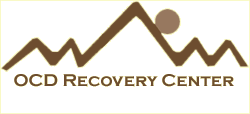
Anxiety Self-Care Protocol
Anxiety is a normal part of the human condition and, in most ways, is very adaptive. If we think in terms of the evolution of the human species we see that it is adaptive. In fact, our species would not have survived without anxiety. Too much anxiety, of course, can make living uncomfortable at best. The following is a discussion of anxiety, where it comes from and what you can do to manage it. Understanding anxiety is a significant part of the cure. In addition to this document we suggest you order the corresponding TherapyWorks Workbook Mastery of Your Anxiety and Panic-Second Edition. (To order: 800-211-8378 ext.95780)
Part IV: Ongoing Self-Care
Even more important than knowing what to do when we are in a panic attack, or anxious state is taking good care of ourselves so that we stay balanced and calm on a daily basis. Here are some tools for maintaining a low anxiety lifestyle.
Tools
PRIMARY TOOLS
- Breathing exercises
- Relaxation Response Training
- Biofeedback
- Cognitive Therapy
- Meditation and Guided Imagery
- Progressive Desensitization and Exposure
PSYCHOLOGICAL SELF-CARE
- Self-Care
- Processing Feelings (esp. Grief)
- Affirmations and Daily Meditation
- Family of Origin Issues and Patterns
- Identifying Self-Destructive Messages
- Eye Movement Desensitization and Reprocessing (EMDR)
- Symptoms Tracking
- Developing Self-Esteem and Awareness of Value
- Developing Self-Confidence and Awareness of Personal Strengths
- Establishing List of Warning Signs For Depression
- Identifying Awareness of Life Goals
- Identifying and Practicing Recreational Activities
- Developing "Emergency Plan"
- Stress Management Training
- Music
- Engram Therapy
- Hydrotherapy
PHYSICAL SELF-CARE
- Allopathic Medication (avoid antihistamines, hypnotics, tranquilizers)
- Herbal Medication (See Kava Kava; St. John's Wort; 5-HTP)
- Aerobic Exercise (30 min. 5 day per week)
- Yoga
- TaiChi
- Sleep Hygiene
- Negative Ion Therapy
- Nutrition and Supplements
- Aromatherapy (e.g. oil of lavender)
- Massage
- Acupuncture
SOCIAL SELF-CARE
- Support Group
- Peer Relationships
- Family Relationships
- Pets
- Contributing To Others
- Assertiveness Skills
- Boundaries
- Self-Ownership
- Communication Skills
CAREER AND FINANCIAL SELF-CARE
- Finding Satisfying Work
- Mastering Resources
SPIRITUAL SELF-CARE
- Prayer and Meditation
- Letting God Work
- Church Attendance
- Scripture Reading
Some Final Thoughts About Anxiety and Fear
- HOW TO INVITE PANIC: In light of the principle of tension between opposites, how might panic attacks continue in someone's life? Whenever you resist something, that something will persist, because you have created a polarity. By resisting a panic attack, you support it, and the stronger your resistance, the greater your support. Here are several ways to prolong the existence of panic in your life:
- Fear panic.
- Actively fight against a panic attack.
- Avoid any panic-provoking situation.
- Set a goal of "never ever" having another anxiety attack.
- Worry about the next time you might feel the symptoms of panic.
- Try not to notice tensions.
- Expect to master panic before you face it again.
- Run away from panic symptoms.
- As long as you are growing you will feel some fear. The trick is to keep your fear within the "growth" zone and not in the "comfort" or, conversely. "Panic" zones.
- Our core fear is that we can't handle something in life. If you knew you could handle it you would not be afraid or anxious. To get past a fear you must do what you are afraid of Use fear as a compass and go the opposite direction from the one which it is directing you to run in.
- You will feel better after you have done the thing you are afraid of if it is healthy for you. The good feelings come after you take the risk and not before.
- Everyone is afraid and anxious at times during their life. You are not alone.
- Pushing through fear is less frightening than putting it off unless it would push you into your "panic zone".
- How we look at an anxiety-producing situation is critical. Our attitude is the one thing that no one can take away from us. You can create meaning and purpose in whatever situation you are in. If we see it as an opportunity for growth it feels much better than if we see ourselves with no control and disempowered. If you are angry or resentful under your anxiety it may be that you are disempowering yourself
Affirmations are very helpful in empowering yourself past early messages you got about not being able to handle things. Identify your "inner critic" and replace those messages with positive affirmations you write, or take from a meditation/affirmation book. Be positive. Make a gratitude list. Thanks others with word and deed. Focus on giving to others to get out of your focus on your own fear.
Beginning of Anxiety Protocol >>
Privacy Policy | Terms of Use | Accessibility Statement




